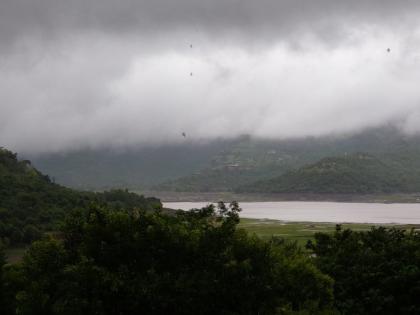Water Shortage in Pune: Low Water Levels in City Dams Due to Extreme Heat
By Lokmat English Desk | Updated: April 9, 2025 16:18 IST2025-04-09T16:17:28+5:302025-04-09T16:18:19+5:30
Due to the high temperature, there has been a water shortage reported in several reservoirs that supply drinking water ...

Water Shortage in Pune: Low Water Levels in City Dams Due to Extreme Heat
Due to the high temperature, there has been a water shortage reported in several reservoirs that supply drinking water to Pune and other districts surrounding it in Maharashtra. Dams in the state, including large, medium, and small, have gone half, raising concerns among officials and residents.
The dams in Pune recorded the lowest water level in Maharashtra, with only 39.55% water stock remaining in the reservoir. The level is even lower than Marathwada's region, which is historically known for water scarcity, mostly in summer, currently holding 42% of usable water stock. The situation in the city is becoming more serious every day. As of April 8, 2025, the average water storage in the state was 43.67% to 25,397 million cubic meters (MCM). This includes Nagpur Dam, Amravati, Pune, Chhatrapati Sambhajinagar, and the Konkan region.
Also Read | Pune Cylinder Blast: Two Killed in LPG Explosion at Tin-Roofed House in Warje Malwadi.
The reason for the water level dropping is scorching heat, which leads to more evaporation. Many dams and reservoirs can see their water levels decreasing day by day and reaching below critical levels, even though April has just started and the monsoon is far away.
Water Levels in Marathwada
Jayakwadi Dam (Paithan): 49.86%
Majalgaon (Beed): 38.13%.
Manjara: 42.37%.
Siddheshwar (Hingoli): 61.10%.
Yeldari: 59.35%.
Vishnupuri (Nanded): 39.87%.
The situation is particularly tense in Ujani Dam, which supplies water to Dharashiv. Ujani currently holds just 19.31% of its usable water stock and authorities fear it could dry up by mid-April.
Water Storage in:
Pune: 39.55%
Marathwada: 42.90%.
Nashik: 45.73%.
Konkan: 51.13%.
Nagpur: 43.52%.
Amravati: 51.43%.